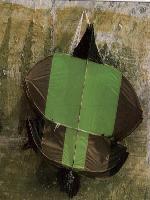|
|
What is Vasant Panchami and why is it celebrated?
Festival Date
Vasant Panchami, the Festival of Kites, falls on Panchami of the Sukal Paksh ( Waxing moon) towards the close of winter in the month of January-February. The weather circle seems to be changing otherwise Vasant used to bring a message of softness in the weather in place of the hard cold season. Vasant is the time when mustard fields are yellow with it the spring is ushered in. So Punjabis welcome the change and celebrate the day by wearing yellow clothes, holding feasts and by organising kite flying. Vasant Panchami day puja is devoted to Saraswati, the godess of learning and wife of Brahma. She bestows the greatest wealth to humanity i.e. the wealth of Knowledge. The lady of the house dressed in yellow with zari and gota on the dress, looking like Lakshmi, the wife of Vishnu (a housewife is always alluded to as Lakshmi and no other goddess) with the chonp, bindi on the forehead and yellow and red bangles on the arms, sets the trend for everyone to become festive. The puja is begun by the youngest girl present by applying the teeka on everyone's forehead and then, by turns, everyone sprinkling water, aipun and roli by the third finger of the right hand dipped in each liquid, by turn, holding the finger each time by the thumb loosely and then letting it go with a light jerk,so as to sprinkle the attached liquid onto the deity. This is done three times with each liquid. The rice and flowers are picked up by the fingers and thumb and showered on to the gods. Everyone puts a little colour onto the gods. The heralding of summer begins with a bit of colour sprinkled even today (before Holi) on the gods. The lady of the house then takes a few bers, some sangaris and a laddoo and a paan (the same paan along with the nariyal can be given to everyone since paan is now a very expensive item) and gives them to each member present. This activity can be done in two instalments as it is difficult to hold all these items at one time. The receiver takes the offerings in both hands and touches them to the giver his or her forehead and returns these items to the giver, but from the second instalment, he or she must take one or two items at least and eat them in the puja room.
View Other Festivals this Year

|
|




